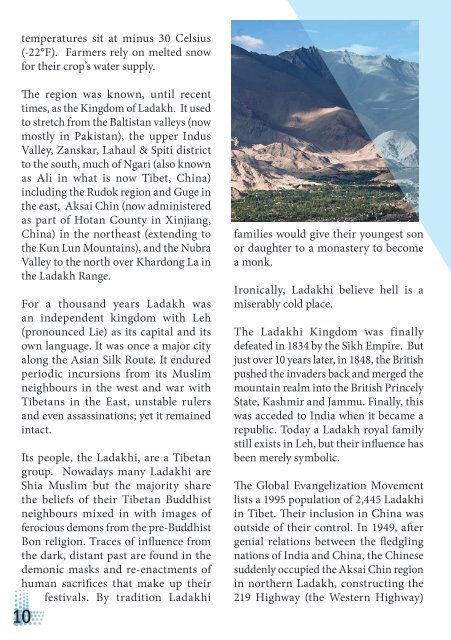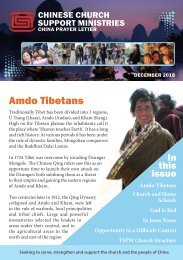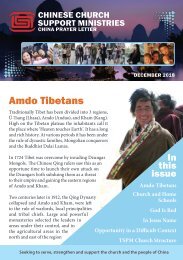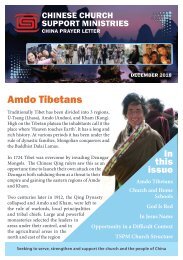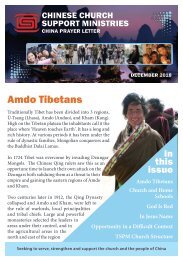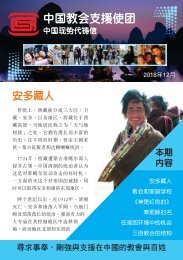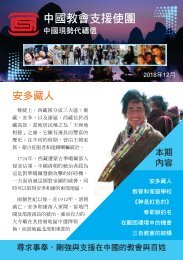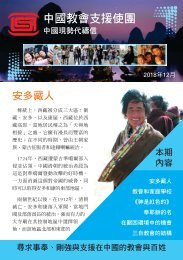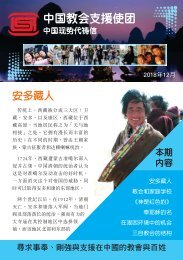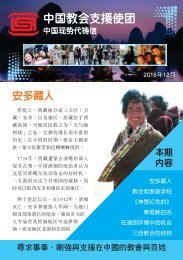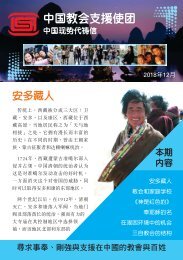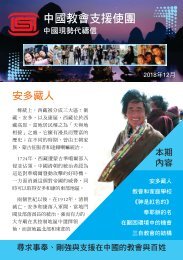UK November 2018
You also want an ePaper? Increase the reach of your titles
YUMPU automatically turns print PDFs into web optimized ePapers that Google loves.
temperatures sit at minus 30 Celsius<br />
(-22°F). Farmers rely on melted snow<br />
for their crop’s water supply.<br />
The region was known, until recent<br />
times, as the Kingdom of Ladakh. It used<br />
to stretch from the Baltistan valleys (now<br />
mostly in Pakistan), the upper Indus<br />
Valley, Zanskar, Lahaul & Spiti district<br />
to the south, much of Ngari (also known<br />
as Ali in what is now Tibet, China)<br />
including the Rudok region and Guge in<br />
the east, Aksai Chin (now administered<br />
as part of Hotan County in Xinjiang,<br />
China) in the northeast (extending to<br />
the Kun Lun Mountains), and the Nubra<br />
Valley to the north over Khardong La in<br />
the Ladakh Range.<br />
For a thousand years Ladakh was<br />
an independent kingdom with Leh<br />
(pronounced Lie) as its capital and its<br />
own language. It was once a major city<br />
along the Asian Silk Route. It endured<br />
periodic incursions from its Muslim<br />
neighbours in the west and war with<br />
Tibetans in the East, unstable rulers<br />
and even assassinations; yet it remained<br />
intact.<br />
Its people, the Ladakhi, are a Tibetan<br />
group. Nowadays many Ladakhi are<br />
Shia Muslim but the majority share<br />
the beliefs of their Tibetan Buddhist<br />
neighbours mixed in with images of<br />
ferocious demons from the pre-Buddhist<br />
Bon religion. Traces of influence from<br />
the dark, distant past are found in the<br />
demonic masks and re-enactments of<br />
human sacrifices that make up their<br />
festivals. By tradition Ladakhi<br />
10<br />
families would give their youngest son<br />
or daughter to a monastery to become<br />
a monk.<br />
Ironically, Ladakhi believe hell is a<br />
miserably cold place.<br />
The Ladakhi Kingdom was finally<br />
defeated in 1834 by the Sikh Empire. But<br />
just over 10 years later, in 1848, the British<br />
pushed the invaders back and merged the<br />
mountain realm into the British Princely<br />
State, Kashmir and Jammu. Finally, this<br />
was acceded to India when it became a<br />
republic. Today a Ladakh royal family<br />
still exists in Leh, but their influence has<br />
been merely symbolic.<br />
The Global Evangelization Movement<br />
lists a 1995 population of 2,445 Ladakhi<br />
in Tibet. Their inclusion in China was<br />
outside of their control. In 1949, after<br />
genial relations between the fledgling<br />
nations of India and China, the Chinese<br />
suddenly occupied the Aksai Chin region<br />
in northern Ladakh, constructing the<br />
219 Highway (the Western Highway)


